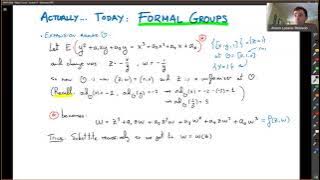Analytic geometry | Euclidean plane geometry
Power of a point
In elementary plane geometry, the power of a point is a real number that reflects the relative distance of a given point from a given circle. It was introduced by Jakob Steiner in 1826. Specifically, the power of a point with respect to a circle with center and radius is defined by If is outside the circle, then ,if is on the circle, then and if is inside the circle, then . Due to the Pythagorean theorem the number has the simple geometric meanings shown in the diagram: For a point outside the circle is the squared tangential distance of point to the circle . Points with equal power, isolines of , are circles concentric to circle . Steiner used the power of a point for proofs of several statements on circles, for example: * Determination of a circle, that intersects four circles by the same angle. * Solving the Problem of Apollonius * Construction of the Malfatti circles: For a given triangle determine three circles, which touch each other and two sides of the triangle each. * Spherical version of Malfatti's problem: The triangle is a spherical one. Essential tools for investigations on circles are the radical axis of two circles and the radical center of three circles. The power diagram of a set of circles divides the plane into regions within which the circle minimizing the power is constant. More generally, French mathematician Edmond Laguerre defined the power of a point with respect to any algebraic curve in a similar way. (Wikipedia).



















